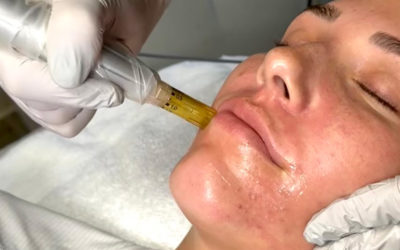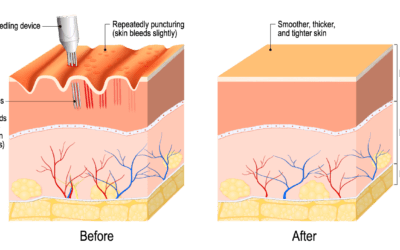Burn Scar Treatment
Last updated on September 17th, 2019

Burn scars can be devastating to quality of life, not only due to appearance deficits but effects on mobility of the affected area and increased sensitivity as well. Various surgical interventions as well as dermatologic therapies such as laser resurfacing, fractional laser, radiofrequency energy, chemical peels, and dermabrasion are all used to deal with surface irregularities and discoloration in an effort to reduce the overall appearance of the scar and blend any lines of demarcation which contribute to visibility. [Aust 2010]
Efficacy of the current array of therapies is mitigated by associated drawbacks.{Aust 2010] For one thing, ablative damage may simply exacerbate sensitivity, which is undesirable. In some ways the therapy mimics the original pathology responsible for the scarring, and may cause increased fibrosis and erosion of the dermal papillae over time with repeated treatment. Also, the reliance on necrotic damage (via trauma, ablation, or coagulation of tissue) brings with it unwanted possibilities such as overstimulation of the inflammatory cascade.
Microneedle percutaneous collagen induction (PCI) therapy for burn scars may represent an excellent modality because the epidermis and surrounding tissue structures are left largely intact after fractional microneedle treatment, and collagen induction occurs in a more natural manner. Cell death due to controlled damage is by apoptosis, a natural process by which the inflammatory cascade is limited and more effectively managed.[Ziegler 2004] Wounding via serial fractional microneedle insertion stimulates the natural wound healing and cell replacement responses but heals over rapidly, resulting in a quick restoration of barrier function. As growth factors saturate the area fibroblast production is increased and activity is upregulated, with subsequent proliferation and stimulation of keratinocytes. A natural lattice of healthy collagen is built from the bottom up, which is a key aspect to successful scar revision; the epidermal tissue is spared, which is especially ideal in the case of burn scarring.[Aust 2010] Notably, microneedle therapy with Dermapen may be used on body locations considered much less suitable for most modalities. The mechanism of action, apoptotic induction of natural collagen lattices, lends itself to repeat treatment with no concern of erosion or other negative modification of treated tissue.
This theoretical rationale for the use of microneedle therapy for burn scarring seems to have been borne out by initial clinical trials. The results of one key study[Aust 2010] combining topical vitamins A and C with microneedle percutaneous collagen induction for burn scarring demonstrated (via histological analysis at 12 months after PCI treatment) regeneration/normalization of tissue as well as mitigated appearance of the scar itself in the judgment of investigators and patients alike. Sixteen patients (8 women) with post-burn scarring were pretreated with topical vitamins occurred for at least one month, which continued post-treatment. A medical-grade dermal roller was used to perform one, two, or three treatments on each patient. No post-procedure hypopigmentation, hyperpigmentation, increased scarring, or increased photosensitivity was recorded; patient satisfaction with appearance improved significantly between baseline and final follow-up at 12 months. The study cited the theoretical importance of maintaining a healthy epidermis while performing repeated treatment in order to truly restore appearance.
Burn Scar Treatment – Microneedling or Collagen Induction Therapy has been shown to reduce the appearance of burn scars by 80%, with histologic evidence of increased collagen and elastin deposition and a 45% thickening of the dermis (Aust et al., 2010)
Dermal Rolling
Find certified Dermapen microneedling professionals
Dermapen® Microneedling Devices are exclusively sold to Medical and Skin Care Professionals. Use the form to the right to get started finding a Certified Dermapen® practitioner in your area.
Enter your location information to find a Dermapen Skin Care Professional.
Want to become a Dermapen Practitioner?
Medical Clinics and Spas can offer their patients the worlds most advanced microneedling treatments with Dermapen
Microneedling Treatments
The Dermapen Microneedling Pen provides an unparalleled response through the segmented delivery of microneedles, creating micro injuries to the epidermis (outer layer of skin) and dermis (the inner layer of skin). As a result, the micro injuries encourage the body’s innate ability to repair itself.
Every Dermapen tip is outfitted with 12 needles and features our patented technologies, which include SureSpace™ and SafLok™. Accordingly, these safety enhancements can be found in every Dermapen needle tip and pen.
Furthermore, by using SureSpace™ and SafLok™ microneedling pen technologies, practitioners can deliver their patients the safest microneedling treatment possible, while getting the best microneedling results for their patients.


